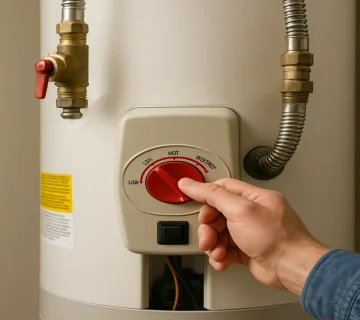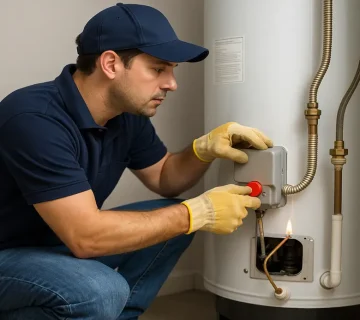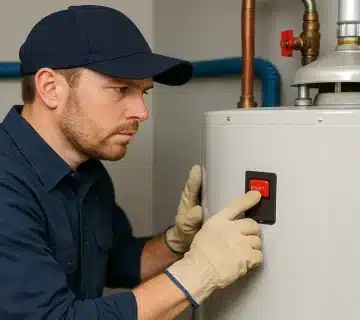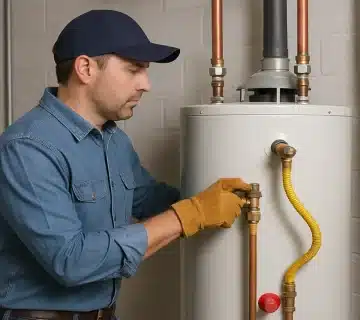Have you noticed your water heater making popping noises or producing less hot water than usual? The most common reason is sediment buildup inside the tank. That’s why learning how to flush a water heater is an essential step to keep your system efficient and avoid costly breakdowns.
In this guide, we’ll explain why flushing matters, how often to do it, and provide a step-by-step process with extra safety tips and FAQs.
What Does Flushing a Water Heater Do?
Over time, minerals like calcium and magnesium settle at the bottom of your tank. If not removed, they:
- Create a layer of insulation that reduces heating efficiency.
- Force the heating element or burner to overwork.
- Increase your energy bills.
- Shorten the lifespan of your water heater.
So, knowing how to flush a water heater is not just a maintenance chore—it’s a money- and energy-saving habit.
How Often Should You Flush a Water Heater?
- Once a year in most homes.
- Every six months if you live in a hard-water area.
- Quarterly mini-flushes are a good option if sediment builds up quickly.
Tools You’ll Need
- Garden hose
- Flathead screwdriver or wrench
- Heavy-duty gloves and safety glasses
- A bucket or floor drain
Step-by-Step: How to Flush a Water Heater
1. Turn Off the Power or Gas
- Electric heater: Switch off the breaker.
- Gas heater: Turn the thermostat to “pilot.”
2. Shut Off the Cold Water Supply
Locate the cold-water valve on top of the heater and turn it off to stop new water from entering.
3. Attach the Hose
Connect the garden hose to the drain valve at the bottom of the tank. Run the other end to a safe drainage area.
4. Open a Hot Water Tap
Turn on a hot water faucet in your home to relieve pressure and allow smooth draining.
5. Drain the Tank
Open the drain valve. Sediment may cause the water to look dark or gritty at first. Let it fully drain.
6. Flush With Fresh Water
Turn the cold-water supply back on for 2–3 minutes with the drain valve still open. Continue until the water runs clear.
7. Refill and Restart
- Close the drain valve.
- Remove the hose.
- Close the faucet inside your home.
- Reopen the cold-water supply to refill the tank.
- Restore power or gas once it’s full.
In about 30–45 minutes, your water should be hot again.
Pro Tips & Safety Notes
- Let the water cool slightly before draining to avoid burns.
- Check the TPR (temperature-pressure relief) valve during the process.
- Follow your model’s manual, as some heaters have unique steps.
- Consider a water filter or softener if you have hard water.
FAQ: How to Flush a Water Heater
Can I do this myself or should I call a plumber?
You can usually do it yourself with basic tools. If the drain valve is stuck or leaking, call a professional.
Will flushing make my water heater quieter?
Yes. Flushing removes sediment, which eliminates the popping or cracking noises.
What if the water is still dirty after flushing?
That may mean heavy buildup or an older tank. A plumber can help with a deeper cleaning or inspection.
Why is it important to know how to flush a water heater?
Because it prevents sediment buildup, improves efficiency, and helps your unit last longer.
Final Thoughts
When you ask how to flush a water heater, the answer is simple: it’s an easy DIY task that protects your investment, improves energy efficiency, and extends your system’s life. Stick to an annual or semi-annual schedule, and your water heater will keep delivering hot water reliably for years to come.
Now that you know how to flush a water heater, you’re ready to keep your system in top shape. For extra details, see this in-depth flushing guide. For additional expert insights, see this guide from Family Handyman.





